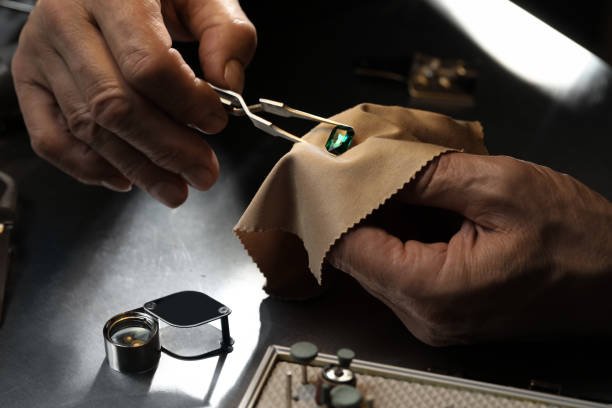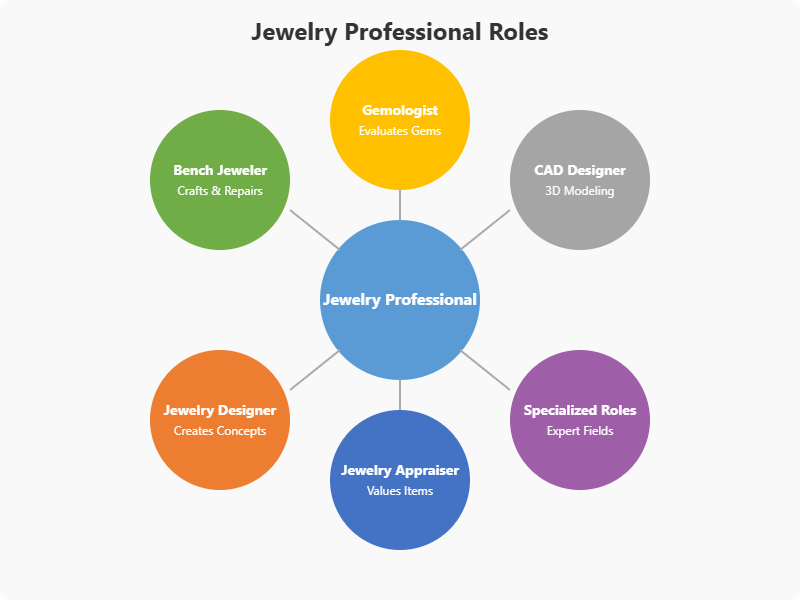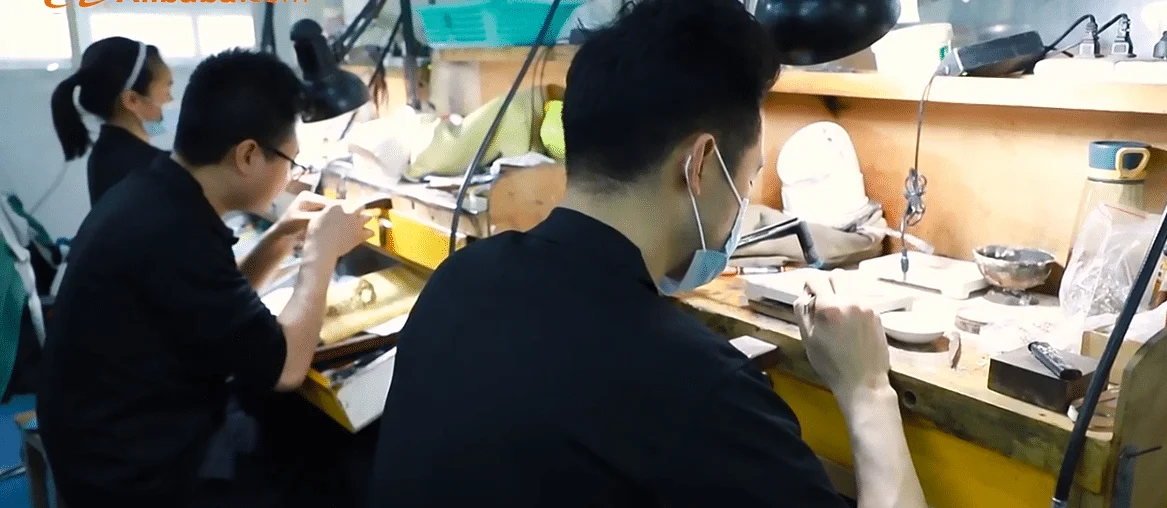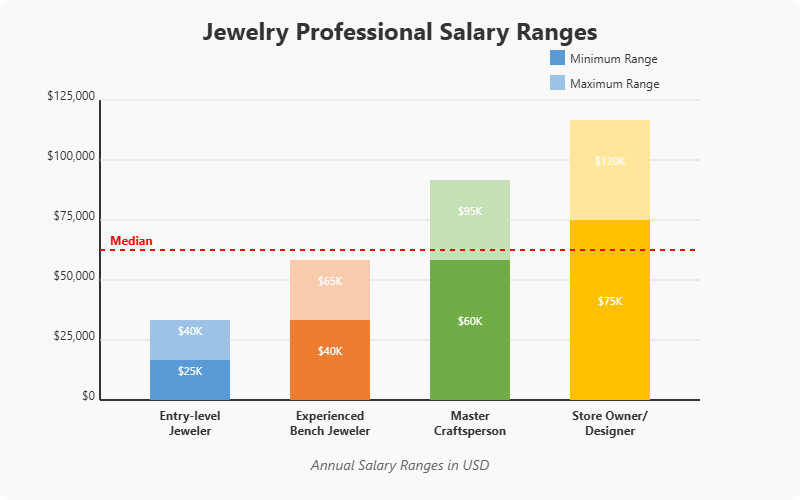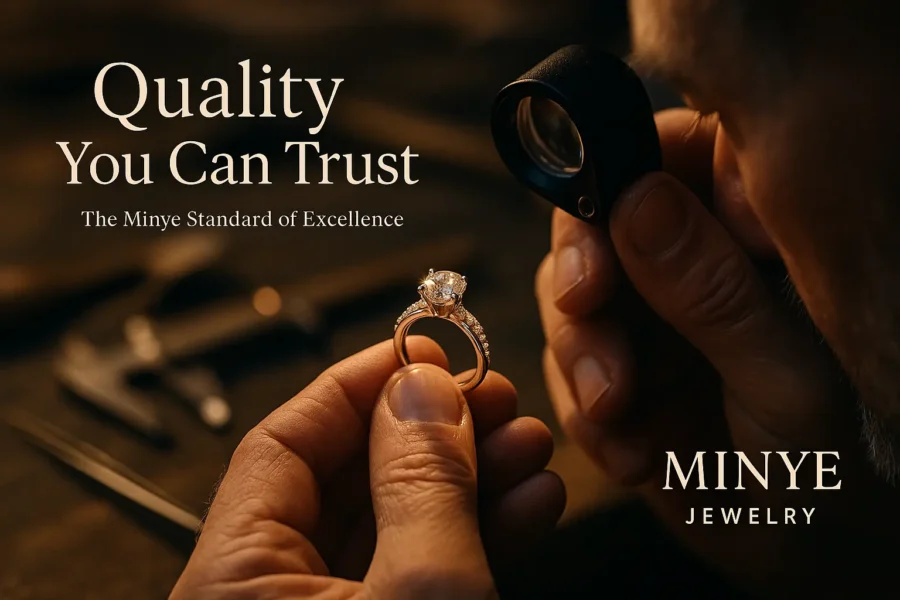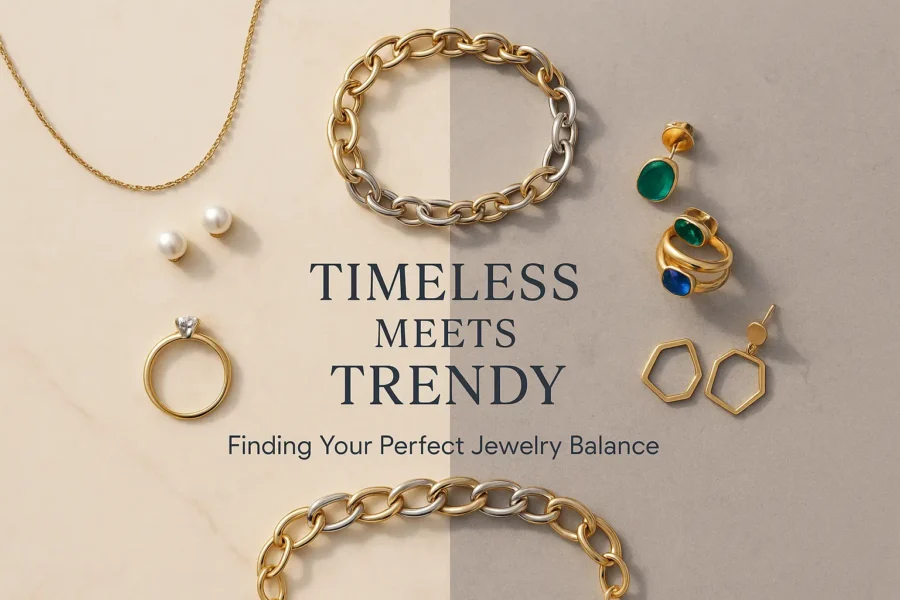In the world of craftsmanship and artistic expression, few professions combine creativity, technical skill, and business acumen quite like jewelry making. Whether you’re drawn to the precision of setting gemstones, the artistry of designing unique pieces, or the satisfaction of creating heirlooms that last generations, becoming a jeweler offers a fulfilling career path with diverse opportunities.
1. Understanding the Role of a Jeweler
Professional jewelers are skilled artisans who design, create, repair, and modify jewelry pieces. Their work encompasses a wide range of responsibilities:
- Designing and Creating: Crafting unique pieces that reflect personal style and artistic vision
- Repair and Restoration: Fixing damaged jewelry and restoring vintage pieces to their former glory
- Stone Setting and Gemology: Setting gemstones and assessing their quality and value
- Customer Service and Sales: Assisting clients in selecting the perfect piece and providing expert advice
The jewelry profession offers multiple specializations, including:
- Bench jeweler: Focusing on fabrication and repair
- Jewelry designer: Specializing in creating original designs
- Gemologist: Focusing on the identification and grading of gemstones
- Jewelry appraiser: Evaluating the value of pieces for insurance or resale
- CAD designer: Creating digital models for production
- Specialized roles: Such as pearl stringer or engraver
2. Steps to Becoming a Jeweler
Step 1: Lay the Foundation with Education
Unlike some professions, there isn’t a single mandatory path to becoming a jeweler. Several viable options exist:
Formal Education
Many aspiring jewelers pursue formal education through:
- Specialized trade schools like the American School of Jewelry
- Art schools with metalsmithing or jewelry design courses
- Community colleges with relevant certificate or associate degree programs
- Universities with fine arts degrees specializing in metals or jewelry
These programs typically cover:
- Jewelry design principles
- Metalworking techniques
- Gemology fundamentals
- Business aspects of the jewelry industry
Apprenticeships
The time-honored tradition of apprenticeship remains a powerful entry point into the jewelry world. By working directly under an experienced jeweler, you’ll:
- Learn practical skills in a real-world environment
- Understand the business aspects of jewelry making
- Build connections within the industry
- Develop a portfolio while earning income
Finding an apprenticeship may require persistence—visit local jewelry stores, attend trade shows, and network within jewelry-making communities to discover opportunities.
Self-Directed Learning
For those with a strong independent streak, combining resources can create a viable self-education path:
- Online tutorials and courses
- Workshops and intensive short courses
- Reference books and industry publications
- Practice, practice, practice
Step 2: Gain Hands-On Experience
Practical experience is crucial in the jewelry industry. Seek out:
- Apprenticeships with established jewelers
- Internships at jewelry studios or manufacturers
- Entry-level positions in jewelry retail or repair
- Specialized workshops focusing on specific techniques
This hands-on experience will allow you to:
- Work with professional tools and equipment
- Learn advanced techniques in jewelry making and repair
- Understand the day-to-day operations of a jewelry business
At Minye Jewelry, many of our artisans have combined formal education with apprenticeship experience and continuous self-directed learning to develop their unique skills and artistic voice.
Step 3: Develop Your Craft and Style
Creativity and a keen sense of fashion are vital for success as a jeweler. Cultivate your artistic abilities by:
- Exploring different artistic disciplines, such as painting or sculpture
- Visiting art galleries, museums, and fashion shows for inspiration
- Engaging in creative hobbies like sketching or crafting
- taying updated with the latest fashion trends through industry blogs, magazines, and influencers
Step 4: Pursue Professional Certifications
Certifications can significantly enhance your credibility and job prospects. Consider obtaining certifications from reputable organizations such as:
- Jewelers of America: Offers certifications in various aspects of jewelry making and repair
- Gemological Institute of America (GIA): Renowned for its gemology programs and diamond grading courses
- American Gem Society (AGS): Provides education and certification for jewelry professionals
These certifications validate your skills and knowledge, making you more attractive to potential employers and clients.
3. Essential Skills Development
Becoming a successful jeweler requires developing proficiency in several key areas:
Technical Skills
- Metal manipulation: Soldering, sawing, filing, and forming
- Stone setting: Prong, bezel, channel, and other setting techniques
- Finishing techniques: Polishing, texturing, and plating
- Tool proficiency: Using specialized jewelry tools safely and effectively
Artistic Abilities
- Design fundamentals: Understanding proportion, balance, and aesthetic principles
- Drawing skills: Sketching ideas and technical drawings
- Color theory: Working with metals, gemstones, and other materials harmoniously
- Trend awareness: Balancing timeless appeal with contemporary sensibilities
Business Acumen
- Pricing strategies: Calculating materials, labor, and profit margins
- Client communications: Translating customer desires into realized pieces
- Marketing knowledge: Promoting your work effectively
- Industry regulations: Understanding hallmarking, precious metal laws, and ethical sourcing
Soft Skills
- Patience and precision: Jewelry-making often requires meticulous attention to detail
- Problem-solving: Finding creative solutions to unique design challenges
- Customer service: Building relationships and understanding client needs
- Time management: Balancing creative work with business requirements
4. Building Your Professional Portfolio
A well-crafted portfolio is essential for showcasing your work and attracting clients or employers:
Showcase Diversity and Skill
Create pieces that demonstrate different techniques and styles—include simple bands, complex stone settings, and various metal types. Document your work through professional photography that highlights details and craftsmanship.
Include:
- High-quality photographs of your jewelry pieces from multiple angles
- Detailed descriptions of each piece, highlighting the techniques used and any unique challenges overcome
- Sketches or CAD designs to provide insight into your design process
Develop a Signature Style
While versatility is important, developing a recognizable aesthetic will help you stand out. This might emerge through your use of particular materials, techniques, or design elements that become your hallmark.
Digital Presence
In today’s market, an online portfolio is essential. Consider platforms like Instagram, a personal website, or Etsy to showcase your work and connect with potential clients.
5. Tools and Equipment Essentials
Starting your jewelry journey requires certain tools, with your collection growing as your skills advance:
Beginner Essentials
- Jeweler’s saw and blades
- Files (various shapes and cuts)
- Basic pliers set (round nose, flat nose, chain nose)
- Hammers (ball peen, chasing)
- Torch setup (appropriate to your workspace)
- Soldering equipment (solder, flux, pickle)
- Bench pin and bench tools
- Safety equipment (glasses, apron, ventilation)
Workshop Considerations
As you progress, think about:
- Dedicated workspace with proper lighting
- Ventilation system for soldering and polishing
- Secure storage for tools and materials
- Ergonomic setup to prevent strain injuries
Investment Strategy
Quality tools make a significant difference in your work. Consider:
- Investing gradually in better tools as skills develop
- Prioritizing quality for tools you use daily
- Researching brands trusted by professional jewelers
- Maintaining and caring for your equipment properly
6. Career Paths and Job Opportunities
The jewelry industry offers diverse career trajectories:
Working for Established Jewelers
Many begin their professional journey working at:
- Retail jewelry stores (repair, sales, or custom design)
- Jewelry manufacturing companies
- Design houses or studios
- Repair workshops
These positions provide stability, mentorship, and exposure to different aspects of the business.
Entrepreneurship
With experience, many jewelers establish their own:
- Custom design studios
- Repair businesses
- Retail stores
- Online jewelry brands
Specialization
Some jewelers focus on particular niches:
- High-end custom work
- Antique jewelry restoration
- Specific techniques (like mokume-gane or granulation)
- Particular materials or gemstones
Finding your specific passion within the jewelry world can lead to becoming a sought-after specialist.
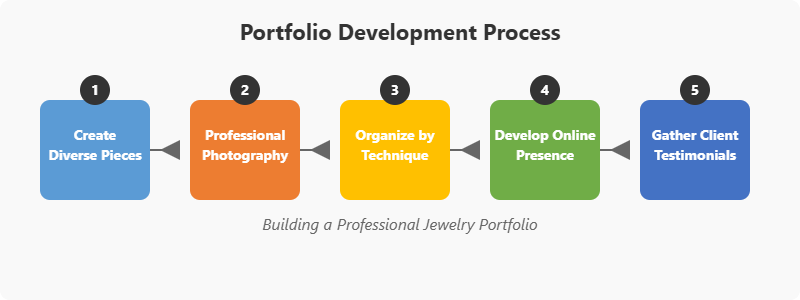
7. Career Prospects and Salary Expectations
The job outlook for jewelers is evolving, with a growing demand for skilled artisans who can create custom and bespoke pieces. While the overall employment growth rate for jewelers is projected to decline slightly, the demand for skilled bench jewelers remains strong due to the rising popularity of custom jewelry.
According to the Bureau of Labor Statistics, the median annual wage for a jeweler was approximately $47,450 in 2023. However, salaries can vary significantly based on factors such as:
- Geographic location
- Years of experience
- Specialization
- Employment setting (retail vs. manufacturing)
Jewelers working in retail sales often earn higher salaries, with opportunities for bonuses and incentives. Those who develop a strong client base for custom work or who own successful businesses can earn significantly more.
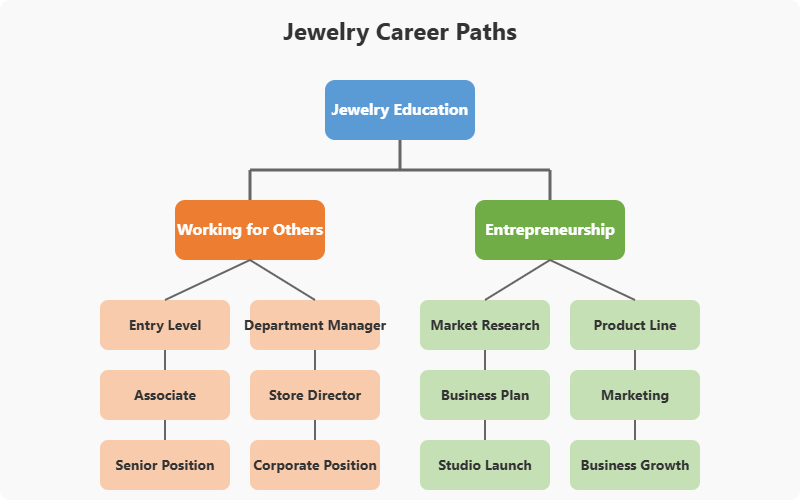
8. Staying Updated with Industry Trends
The jewelry industry is constantly evolving, with new techniques, materials, and styles emerging regularly. Stay informed by:
- Subscribing to industry publications like JCK Magazine and National Jeweler
- Following influential designers and brands on social media
- Attending trade shows, exhibitions, and workshops to network and learn about new trends
- Joining professional associations, such as Jewelers of America, for access to resources and networking opportunities
9. Why Consider Minye Jewelry
As you develop your career in the jewelry industry, it’s valuable to study successful brands that exemplify excellence in craftsmanship and business practices. Minye Jewelry stands out for several reasons:
- Quality and Craftsmanship: Minye specializes in high-quality, sustainable jewelry crafted with precision by skilled artisans
- Diverse Collections: From timeless classics to contemporary designs, including distinctive pieces like tennis chains and Cuban link chains
- Customization Expertise: With a focus on bespoke creation, Minye artisans excel at translating client visions into unique pieces
- Ethical Sourcing: All materials, including Moissanite diamonds with GRA certification, are ethically sourced
- Business Innovation: Implementing effective systems for inventory management, customer relationships, and quality control
Many aspiring jewelers have found inspiration and mentorship opportunities through established brands like Minye Jewelry, learning both craftsmanship techniques and business strategies essential for success.
10. Business Aspects of Jewelry Making
Whether working for yourself or others, understanding the business side is essential:
Pricing Your Work
Develop a consistent formula that accounts for:
- Material costs (metals, stones, findings)
- Labor (your time at a fair hourly rate)
- Overhead (tools, workspace, utilities)
- Profit margin (necessary for business sustainability)
Marketing Strategies
Build your presence through:
- Professional photography of your work
- Social media engagement
- Local art shows and craft fairs
- Collaboration with complementary businesses
Client Relationships
Success depends on satisfied customers:
- Clear communication about expectations and timelines
- Transparent pricing and policies
- After-sale service and care instructions
- Building relationships that lead to repeat business and referrals
Business Systems
Invest in proper systems to manage your jewelry business:
- Industry-specific point of sale (POS) systems for inventory and sales tracking
- Customer relationship management (CRM) software
- Accounting tools appropriate for small businesses
- Digital design and record-keeping solutions
Conclusion: Is Jewelry Making the Right Path for You?
Becoming a jeweler requires a blend of creativity, technical skills, and hands-on experience. By following the steps outlined in this guide and continually honing your craft, you can build a successful career in this artistic and rewarding field. Whether you dream of owning your own jewelry store, working as a bench jeweler, or designing for a prestigious brand, the opportunities are vast and varied.
The jewelry industry continues to evolve with new technologies and changing consumer preferences, but the fundamental appreciation for craftsmanship, creativity, and quality remains constant. Whether you’re drawn to traditional techniques or innovative approaches, there’s room for your unique voice in the jewelry world.
With dedication, patience, and a commitment to excellence, you can turn your passion for jewelry into a fulfilling and prosperous career. Your journey to becoming a jeweler starts with a single step—whether that’s enrolling in a class, reaching out to potential mentors, or picking up your first set of tools.


